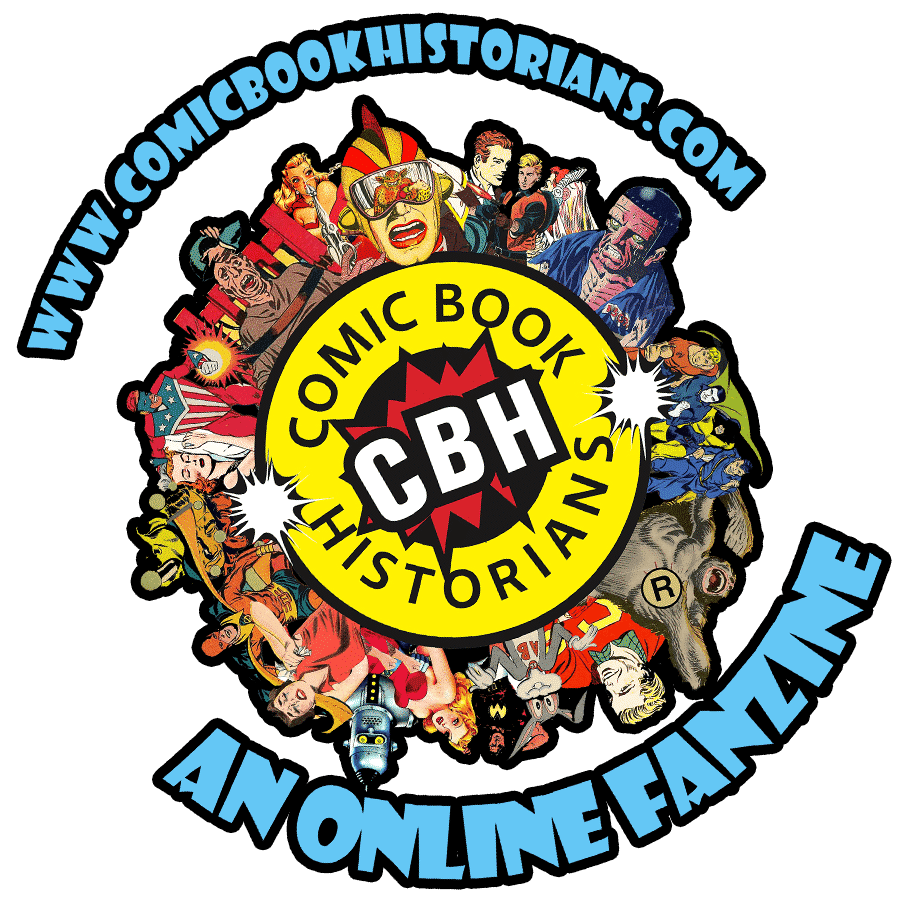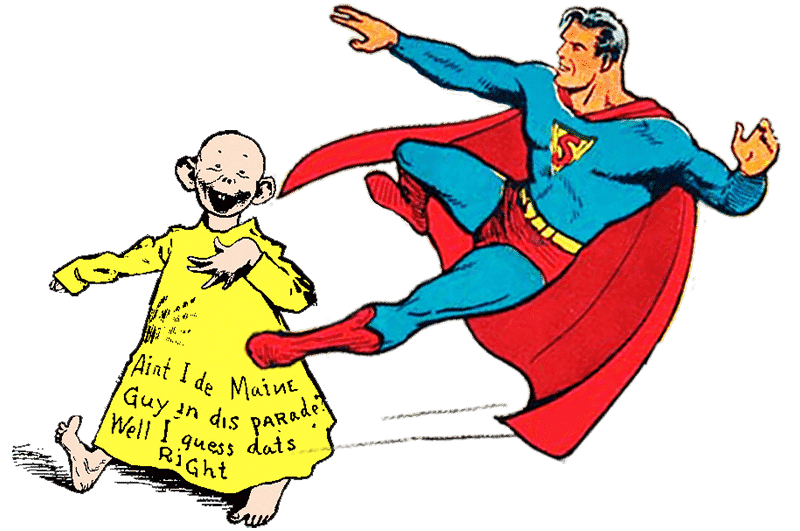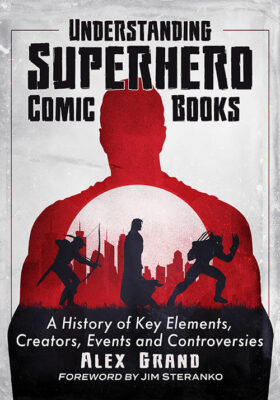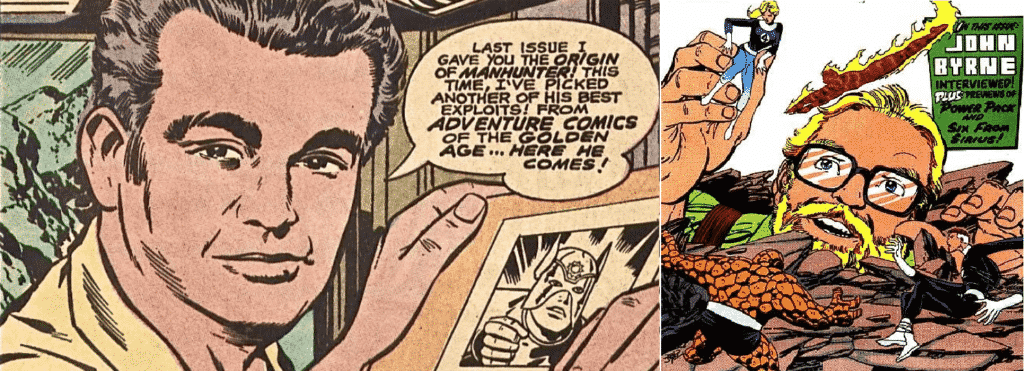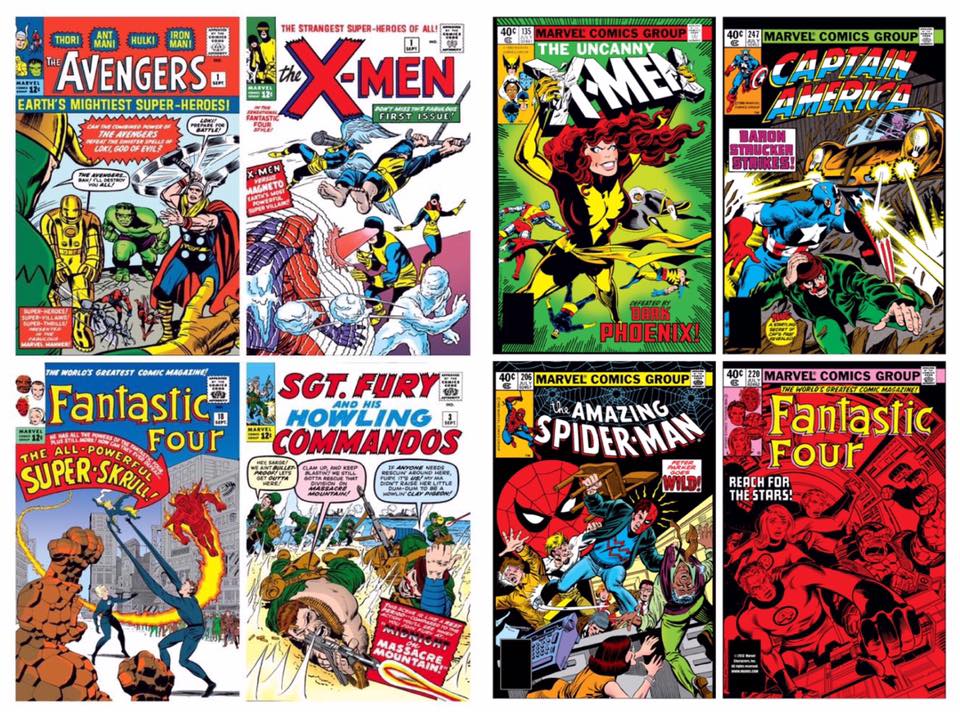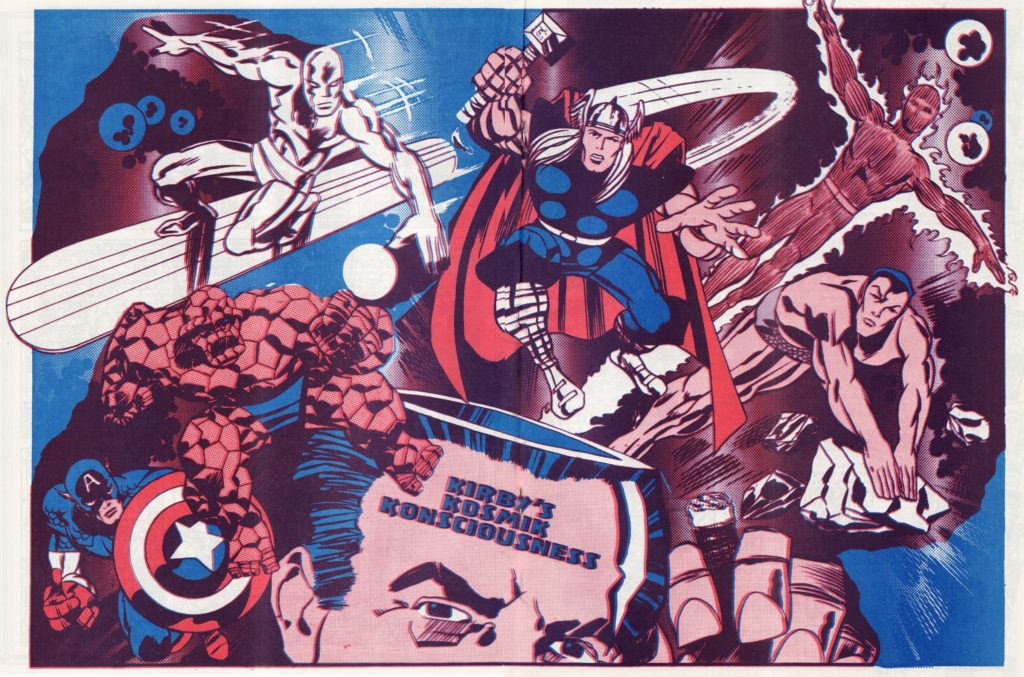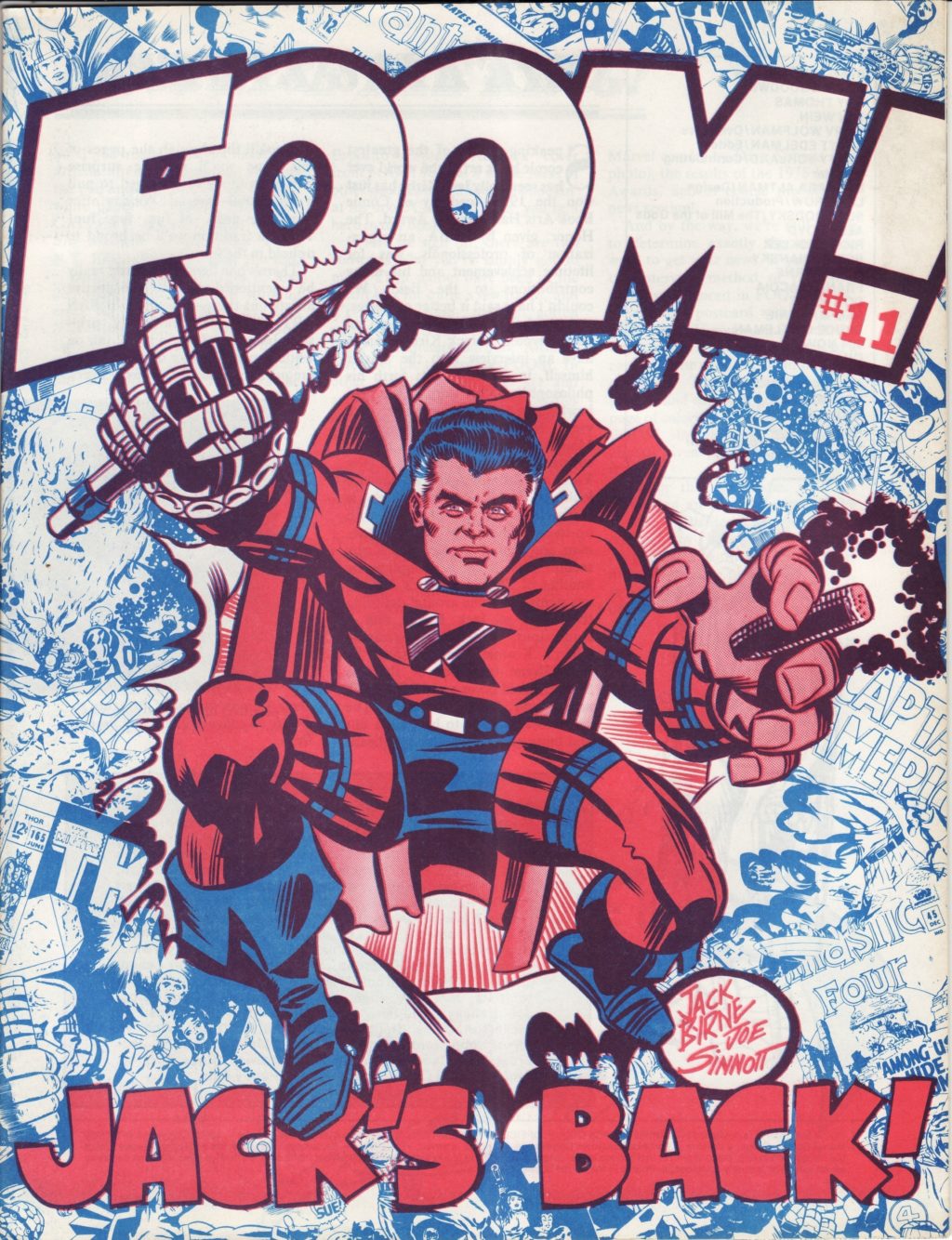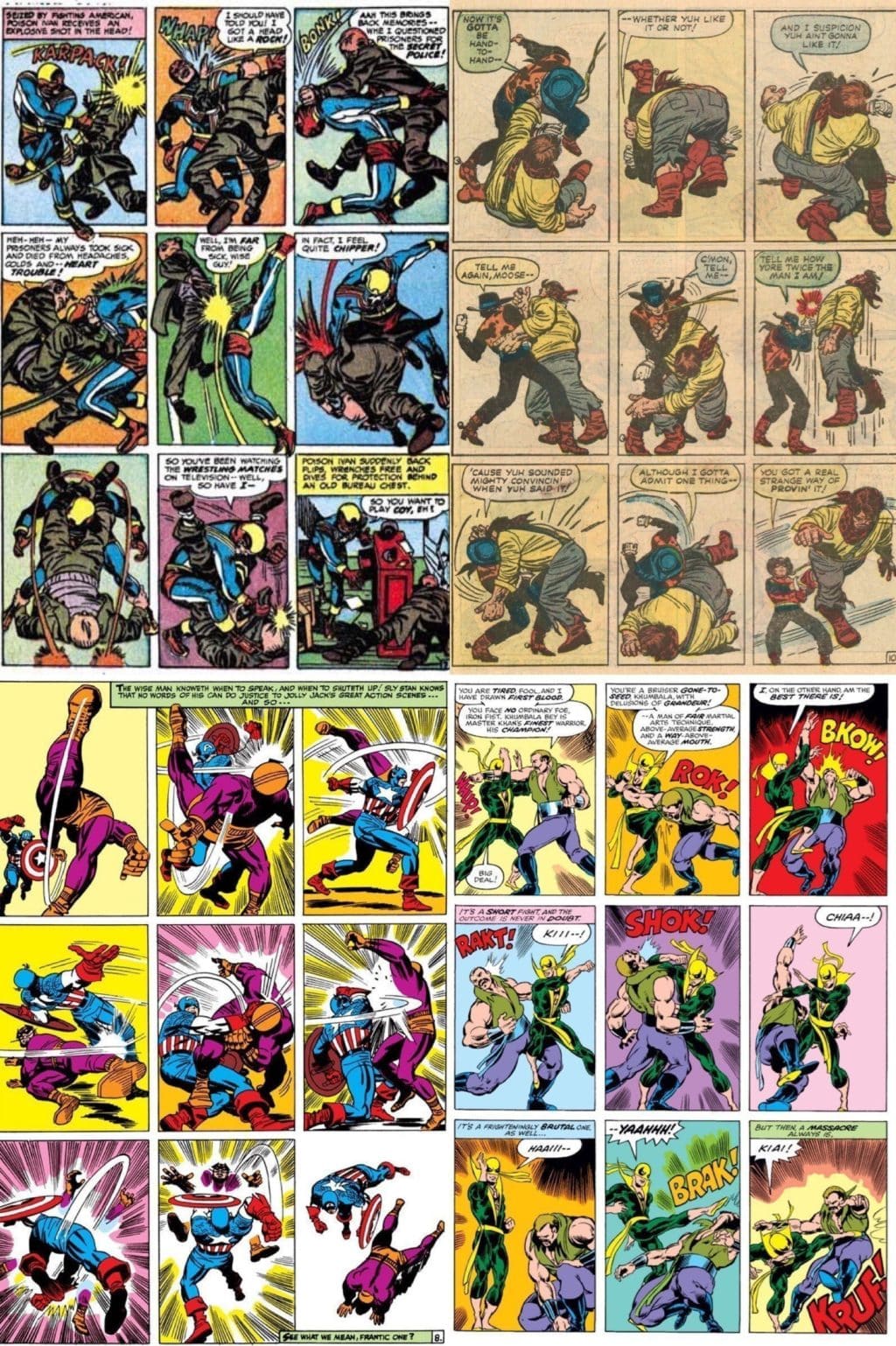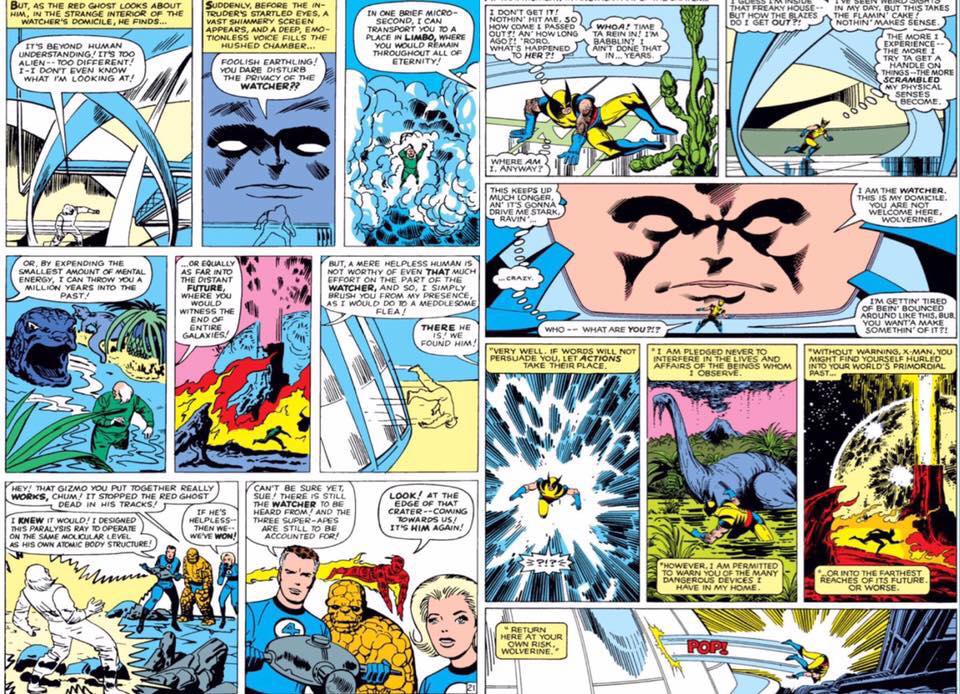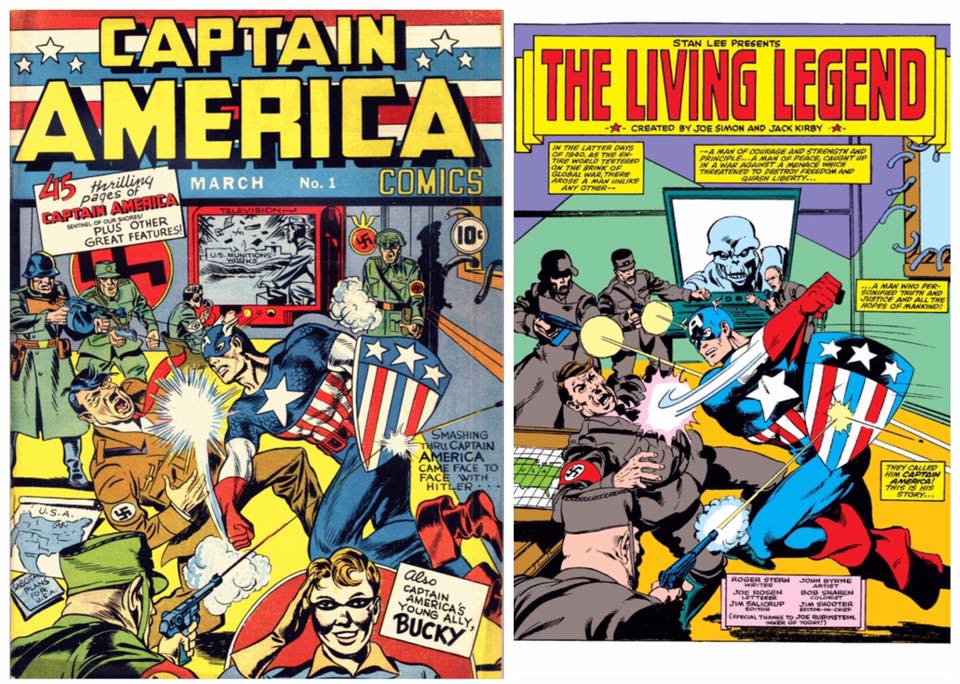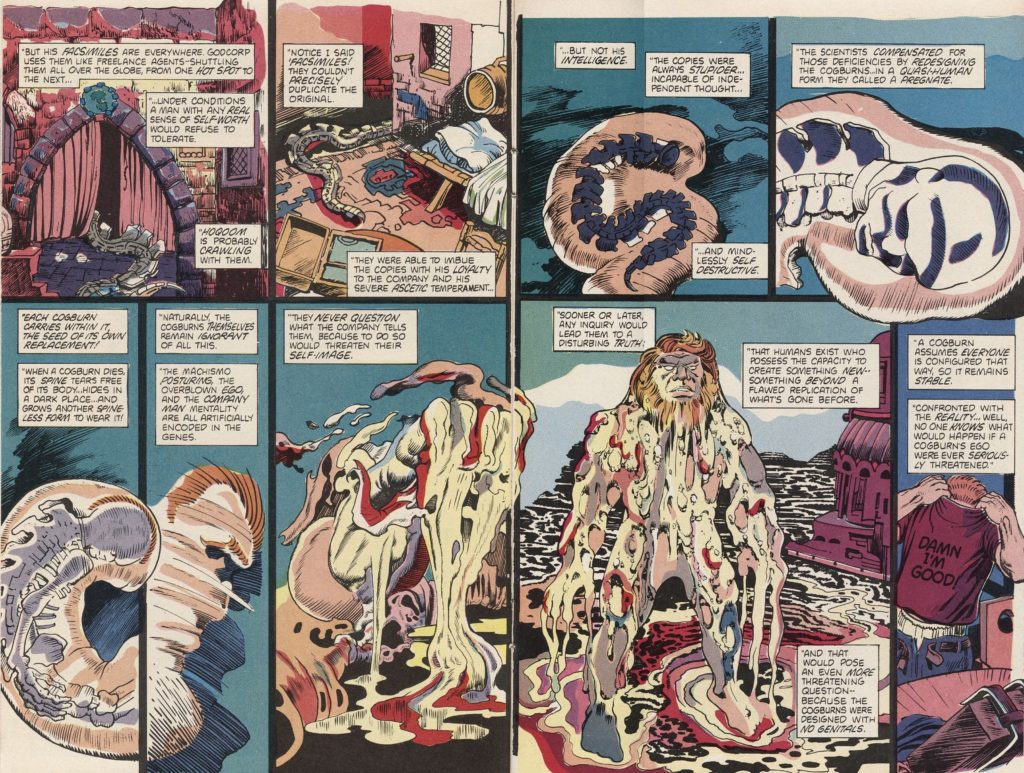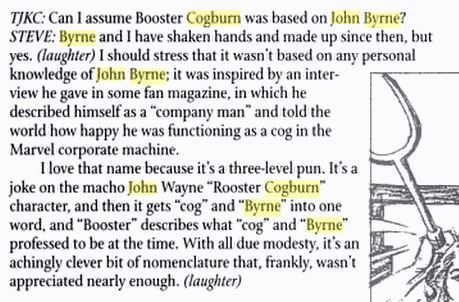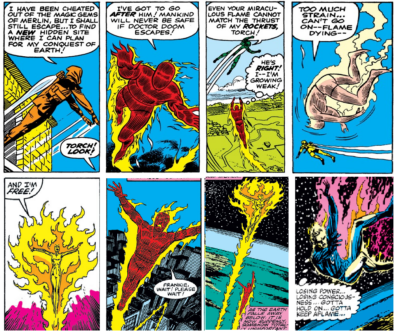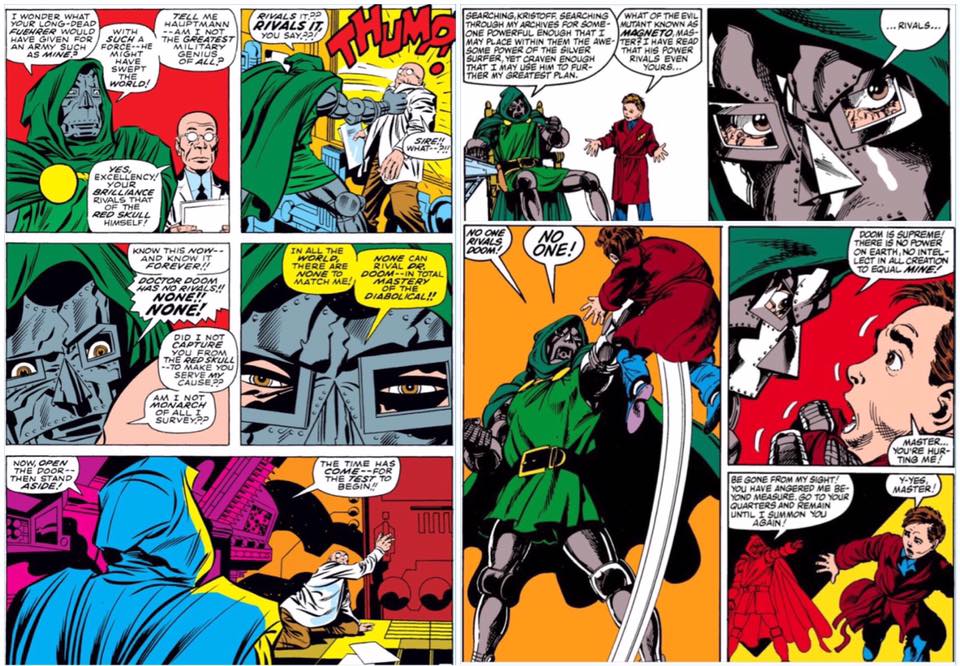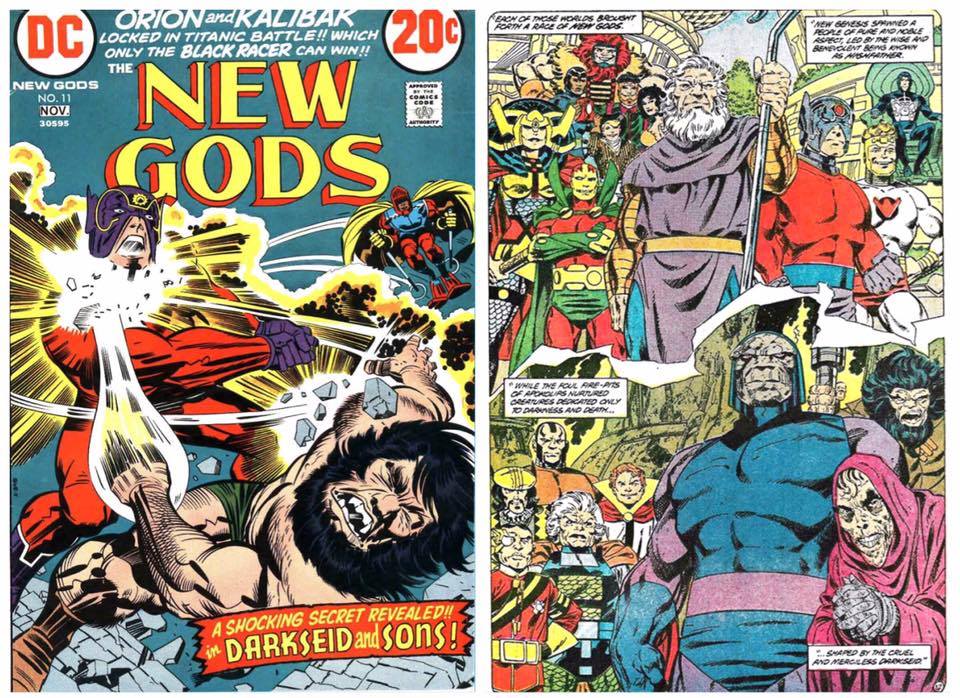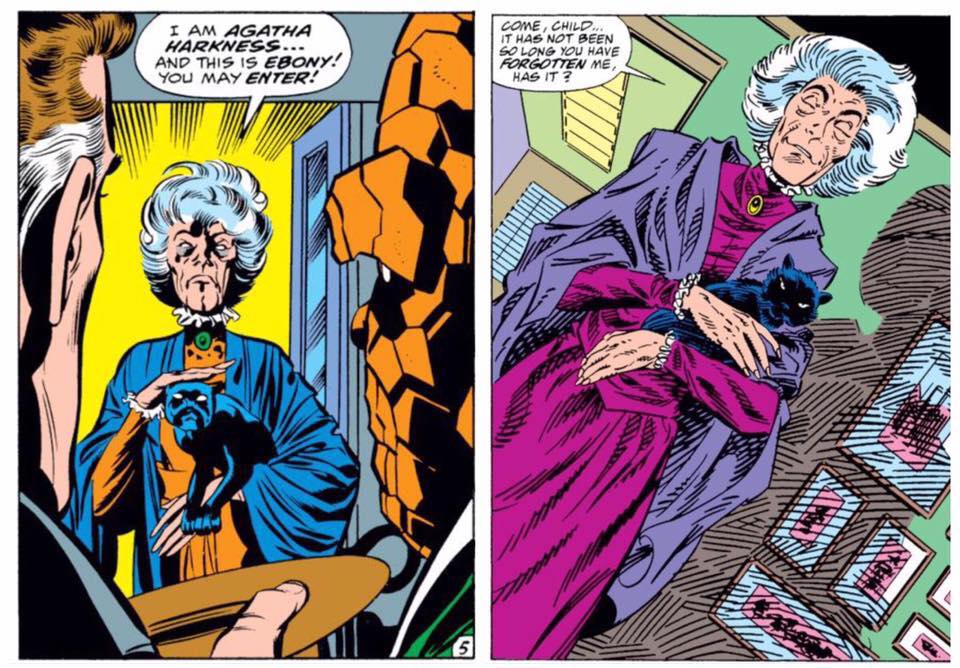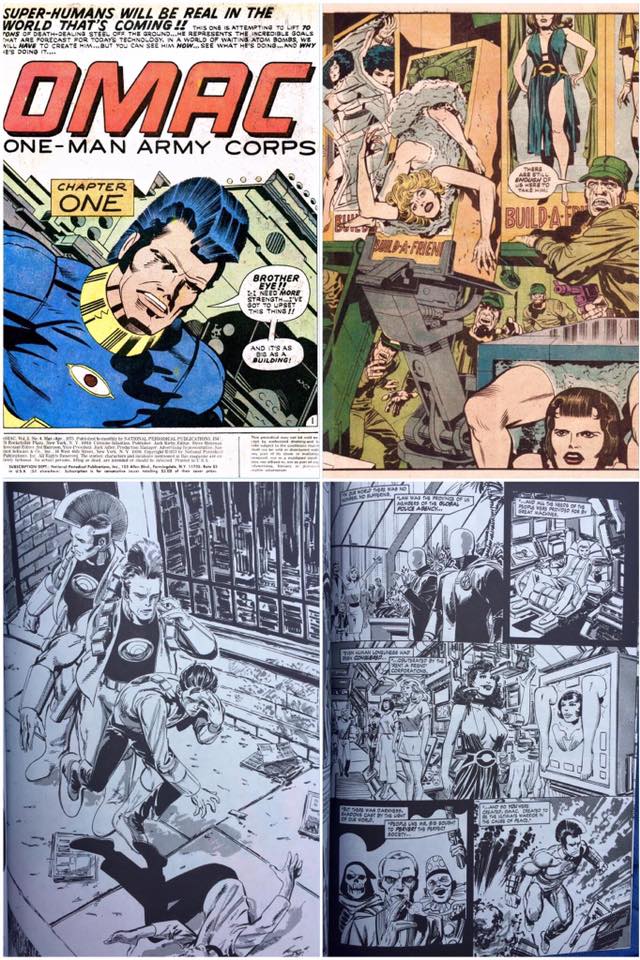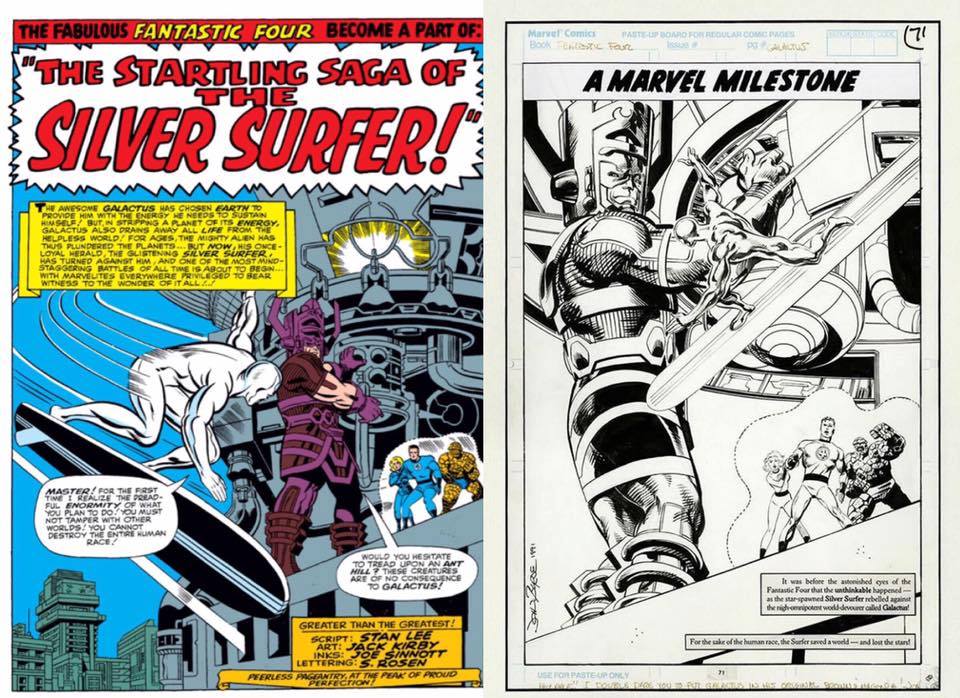The Comic Book Relationship between Jack Kirby and John Byrne
Read Alex Grand’s Understanding Superhero Comic Books published by McFarland Books in 2023 with Foreword by Jim Steranko with editorial reviews by comic book professionals, Jim Shooter, Tom Palmer, Tom DeFalco, Danny Fingeroth, Alex Segura, Carl Potts, Guy Dorian Sr. and more.
In the meantime enjoy the show:
As shown in other episodes, Jack Kirby co-created the Marvel Universe and co-plotted, and drew an incredibly high amount of output for Marvel in the 1960s.
read below and/or click the video:
Frankly, there was no Marvel as we know it today until Jack came along after the Atlas implosion and co-created the Marvel Universe with Stan Lee. He co-created so many comics and penciled so many comics at once, with his signature look that Marvel became a powerhouse rivaling DC by the time he left in 1970. Many readers lined up to see the next story, and fell in love with the aesthetic. John Byrne didn’t create nearly as many characters as Jack Kirby, however he had a particular aesthetic and skill enough to pump in out in high volumes which contributed to Marvel’s and his own personal success in the 1980s.
Here is an example of both Kirby and Byrne’s popularity respectively in the 1960s and the 1980s. In 1963, Jack Kirby did the interiors to 4 issues with the same cover date which he also co-created. In 1980, John Byrne also did the interiors to 4 issues with the same cover date.
Although Jack was the creator, both of them were talented work horses that pumped out alot of productivity and helps establish a house style at Marvel in their respective decades. However, what started out as a younger artist looking up to an older artist turned into an unfriendly feeling between the two. So let’s take a look at points in John Byrne’s career where he nodded toward Kirby, and when Kirby nodded back.
In 1975 before Byrne’s success, he penciled this admiring double page spread celebrating Jack Kirby’s Kosmic Konsciousness in FOOM 11, 1975.
To me this appears as if John Byrne had great respect for and was likely a fan of Jack Kirby, and his imagination which co-created an entire Marvel Universe. Byrne also penciled the cover of this issue of FOOM 11, paying homage to Jack.
John Byrne developed his skill and became a professional artist in Marvel’s bullpen in the late 1970s showcasing his reliable dynamic art style in his Iron Fist run he did with Chris Claremont. He used Kirby’s signature 9 panel action shots in Iron Fist 7, 1976 which Jack originally used in Fighting American 3, 1954, Two Gun Kid 62, 1963, Tales of Suspense 85, 1967.
John Byrne “homaged” Jack Kirby in X-Men 137, 1980 by having the Watcher give the same treatment to Wolverine as he did to the Red Ghost in Kiriby/Ditko/Lee’s Fantastic Four 13, 1963.
John Byrne again “homaged” Jack Kirby and Joe Simon’s cover to Captain America Comics 1, 1941 in his own Captain America 255, 1981.
In 1981, Jack Kirby went public about feeling he had been deprived of creator credit and money while co-creating the Marvel Universe. John Byrne, who was originally a fan of Jack Kirby and made alot of money utilizing and penciling characters Jack had co-created, wrote an editorial declaring himself proud to be a “company man,” and argued that creators should “live within the rules while they’re around.” John Byrne wrote that Jack knew the deal and had no rights.
In response to John Byrne, Jack Kirby penciled Steve Gerber’s Destroyer Duck 4, 1983 and depicted John Byrne as “Cogburn,” a spineless company man with no genitals and all ego. Here is the quote by Steve Gerber from Collected Jack Kirby Collector 2, 2004.
John Byrne quickly became one of the most successful artists of Marvel in the early 1980s literally mining/swiping JackKirby‘s co-creations and with the Jim Shooter contract, made alot of $$$. John Byrne’s Fantastic Four brought the superhero science fiction series back to his Kirby Lee roots by using tropes and panel plot structures already showcased in the 1960s like Human Torch chasing after a faster character with his flame burning out. FF 5 1962 and FF 244 1982.
In 1983, John Byrne “homaged” Jack Kirby again in his rendition and conversation of Dr. Doom taken from a Kirby/Lee 1969 Fantastic Four story. In this situation, Byrne uses Kirby/Lee’s art and dialogue to again express that no body rivals Dr. Doom.
In 1987, John Byrne had moved over to DC and again mined and used Jack Kirby’s New God’s creations in his Legends mini-series.
In 1989, John Byrne moved back to Marvel again and used Agatha Harkness from Jack Kirby/Lee’s Fantastic Four 1970 into his West Coast Avengers series.
So at this point, John Byrne has a reputation as a person who revisits and illustrates/writes new adventures of Jack Kirby’s creations and making alot of money, meanwhile upsetting Jack Kirby who didnt get nearly as good of a contract for co-creating these characters. In 1991, John Byrne at DC did the same with Jack Kirby’s 1974 dystopian adventure of OMAC & Brother Eye with a black & white 4 part limited series.
Also in the same year of 1991, John Byrne “homages” a 1966 page by Jack Kirby again with this image of the Fantastic Four and Galactus.
It appears that the relationship between John Byrne and Jack Kirby started out as a fan-boy, then talented plotter-artist and later a writer-artist who got to create new adventures of his idol, Jack Kirby’s co-creations, but unfortunately did not show strong signs of support for the man he was emulating.
Join us for more discussion at our Facebook group
check out our CBH documentary videos on our CBH Youtube Channel
get some historic comic book shirts, pillows, etc at CBH Merchandise
check out our CBH Podcast available on Apple Podcasts, Google PlayerFM and Stitcher.
Use of images are not intended to infringe on copyright, but merely used for academic purpose.
All images above ©Marvel Comics except New Gods, Legends and OMAC ©DC Comics, and Destroyer Duck ©Steve Gerber, Jack Kirby Collector ©TwoMorrows Publishing, Photos ©Their Respective Copyrightholders
The views discussed above are opinion based on data and perception.
